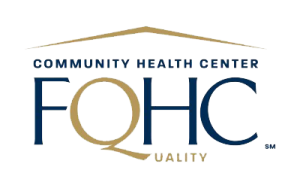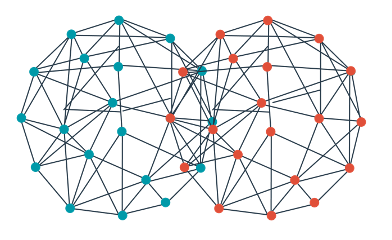Over 1,300 federally qualified health centers (FQHCs) across all 50 states and U.S. territories are working everyday to advance health care equity and eliminate health disparities. Defined as differences in access to care, quality of care, and health outcomes by racial, ethnic, or socioeconomic group, health disparities are often concentrated in communities underserved by healthcare providers. With a targeted focus on improving community health and accepting any patient regardless of ability to pay, FQHCs have made and continue to make huge strides in reducing disparities.

But continuing pressure to do more with limited resources and pressure to participate in value-based care initiatives is making the work FQHCs do more and more challenging. The good news is that the tools that are available to FQHCs have improved dramatically from the early days of the Health Center Program. Now, the availability of technology like artificial intelligence – combined with the troves of data being stored in electronic medical records (EMRs) – makes it possible to achieve the level of targeting in patient outreach necessary to truly move the needle on health disparities. Health centers can truly prioritize access for the highest-need individuals in the communities they serve and make even larger advances in health care equity.

Focusing on FQHCs and Health Care Equity
Since the inception of the Health Center Program in 1965, FQHCs have been working to advance health care equity. However, in recent years, health equity and health disparities have received increased attention from major health care leaders. As Elizabeth Fowler, director of the Center for Medicare and Medicaid Innovation, said last April, “COVID exposed vast racial and ethnic disparities in the health system.”
While FQHCs have played a huge role in reducing disparities in care by providing equitable access, such as equitable access to the COVID-19 vaccine, as well as high-quality services, more work needs to be done. Health disparities in access to care, quality of care, and health outcomes continue to be far-reaching and harmful to countless communities across the country. For example, compared to their white counterparts, heart disease is more likely to kill African Americans, and Native Americans have a 60 percent higher infant mortality rate.

To remedy these gaps, FQHCs have made concerted efforts to conduct patient outreach in underserved communities. The challenge with these efforts, however, is that they are imperfect. Outreach costs can quickly add up, and it is challenging to know exactly who to target – which patients would benefit most from primary and preventive health services. Furthermore, FQHCs are increasingly under pressure to do more with less. They are expected to report and perform on quality metrics for multiple payers, increase access to care in underserved communities, participate in value-based care initiatives, and develop sustainable business models while continuing to advance their mission of health equity.
The good news is FQHCs have terabytes of data – patient data stored within the EMR – at their fingertips. Using artificial intelligence, that data can be put to good use, allowing FQHCs to target specific patients for specific interventions, including chronic disease management and preventive screenings, with the aim of closing care gaps and increasing health care equity.
Defining Artificial Intelligence for FQHCs
Artificial intelligence, or AI, is more than simple data analysis. With the ability to process huge quantities of data, AI-powered algorithms develop predictions based on that data at a scale beyond what a person could process. Then, the AI-powered algorithms learn as they go. With machine learning, AI models are trained on actual outcomes and all the associated data that has led to the outcome. They are able to find patterns, correlations, and insights at a scale not achievable by human-powered solutions.

Then, in production, the AI models can ingest data feeds to generate predictions based on the dataset that they were trained on, while continuing to learn to further increase the accuracy of future predictions. The algorithms become smarter and more sophisticated over time. Core characteristics of AI include:
- Processes: AI can process large quantities of data – collected and saved in various formats – to develop predictions of likely outcomes.
- Calculates: Then, AI calculates how likely certain data points are to predict certain outcomes and develops algorithms based on that data.
- Learns: Finally, AI can take real-world outcomes and adjust its algorithms to develop even more likely predictions.
AI has shown incredible potential in numerous fields – from chatbots to finance. In healthcare, it has exciting applications in diagnostics, imaging, and targeted treatment. But AI can serve FQHCs and clinics of all sizes … today. By sorting through the data FQHCs already have, AI can drive enhanced patient outreach, leading to reduced health disparities for countless communities.

Why All FQHCs Need AI To Advance Health Care Equity
The entire healthcare system is being called to do more to advance health care equity. For FQHCs, it is an imperative that has always existed and remains a top priority. In fact, the Health Resources and Services Administration, the primary funder of FQHCs, made its first goal in its FY23 strategic plan to “Take actionable steps to achieve health equity and improve public health.” The time to level up efforts to reduce health disparities is now. Here’s how AI can help.
- Get a better picture of your patient population, including their health needs and care gaps, by unlocking additional data points in your EMR. Every year, a typical patient produces around 80 megabytes a year in health data. That’s about 320, 200-page books worth of data. Gleaning insights from this quantity of data – beyond very simple risk stratification – takes a huge amount of manpower and analytics capabilities.
Actium Health CENTARITM can simplify this process. Using AI, CENTARI runs in the background to develop highly targeted patient audiences – no spreadsheets and manual data analysis required.
- Go beyond simple demographics in targeted patient outreach. Many traditional outreach efforts focus on targeting patients by simple demographics. For example, outreach teams may focus on a particular neighborhood or zip code. Or perhaps they run preventive care campaigns focused on men or women. AI can help take outreach efforts to the next level.
Instead of casting a wide net – and risk reaching people with irrelevant information – CENTARI uses AI to develop highly targeted patient audiences. That way outreach teams know exactly who to call and when. Outreach teams can also prioritize in order of patient need to make the quickest strides on reducing disparities.
- Do more with less. The KFF and Geiger Gibson/RHCN Community Health Foundation ran a survey of FQHCs in 2019 that asked about some of the top challenges health centers were facing. The top four challenges cited included rising operations costs, workforce challenges including both recruitment and retention, and limitations on physician space. In other words, FQHCs are being asked to do more, with less. When faced with resource constraints – from operating expenses to clinical staff and exam rooms – FQHCs have to prioritize their limited appointment availability.
Using CENTARI’s AI-powered algorithms, FQHCs can target their highest-risk patients for a first offering of appointments, whether patients have particularly urgent conditions, multiple comorbidities, or have delayed care for too long. They can also tailor their targeting to focus on specific neighborhoods or communities that are most underserved in order to align with their mission.
- Mitigate any bias in outreach. Just as AI algorithms can be tailored to adjust to each FQHC’s unique mission, it can also be adjusted to mitigate any potential bias. Because certain communities are less likely to access care, they are often mistakenly perceived as needing less care. However, access is not equivalent to need, and FQHCs exist in order to remedy that distinction.
CENTARI develops a score threshold so that no particular racial group or gender is underrepresented. In other words, CENTARI ensures that FQHCs can continue prioritizing outreach to underserved groups while also reaching the highest-risk patients, and makes sure that AI models do not confuse access with need.
While, reducing health disparities and advancing health care equity should be a top priority for all healthcare providers, it has been a cornerstone for FQHCs for over fifty years. Since their inception, FQHCs have made giant strides in closing care gaps by conducting outreach to underserved communities and increasing access to care. But with increasing resource constraints – and increasing pressure on FQHCs to deliver on new challenges like COVID, quality of care metrics, and clinical staff shortages – FQHCs need new tools to advance their work. AI has the power to deliver tremendous benefits to FQHCs, unlocking new insights in their EMR data, developing targeted patient audiences, and ultimately getting the patients most in need of care through the FQHC’s doors.
Interested in exploring how AI can help FQHCs reduce health disparities? Touch base with the Actium Health team today at info@actiumhealth.com.


